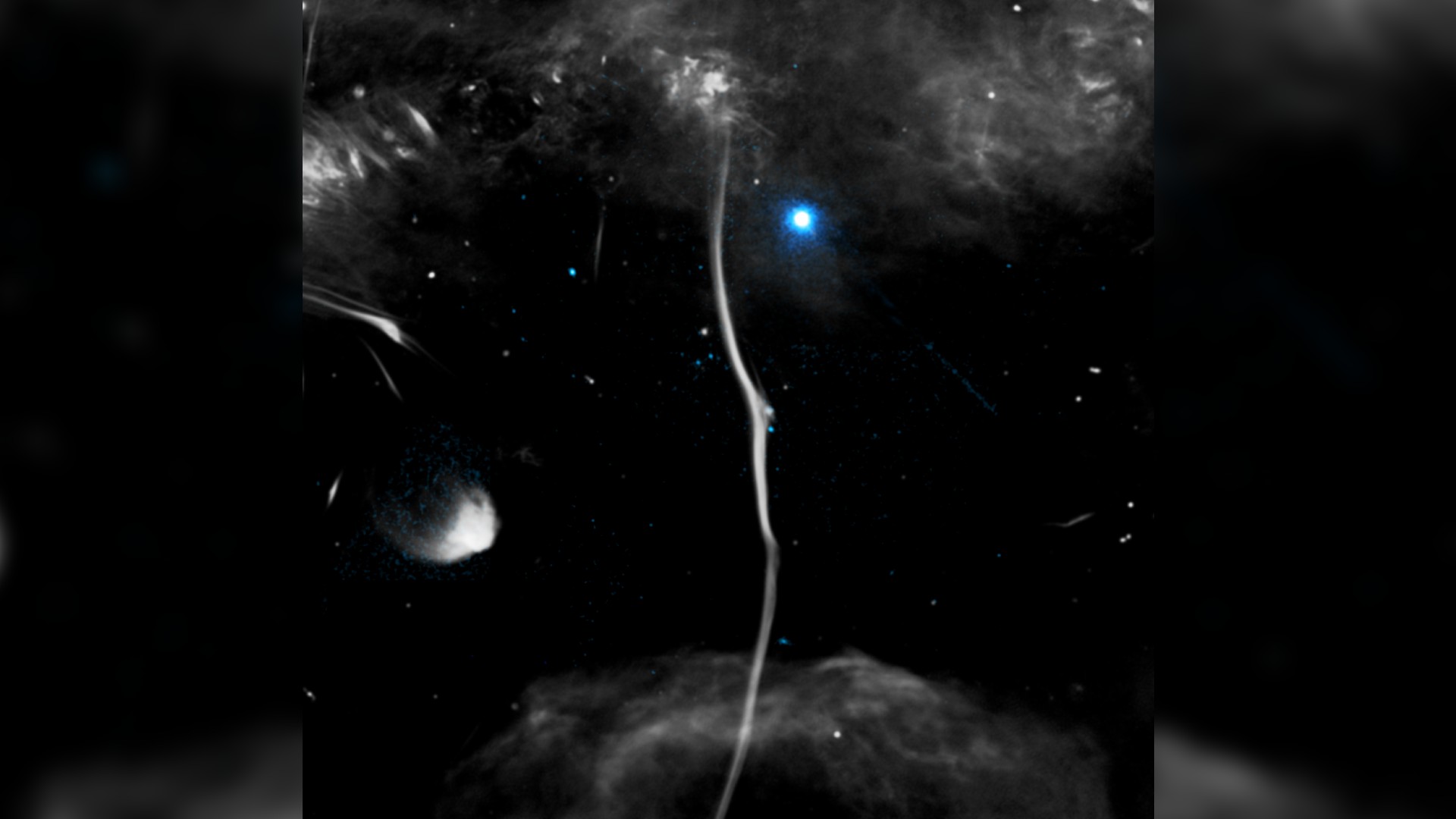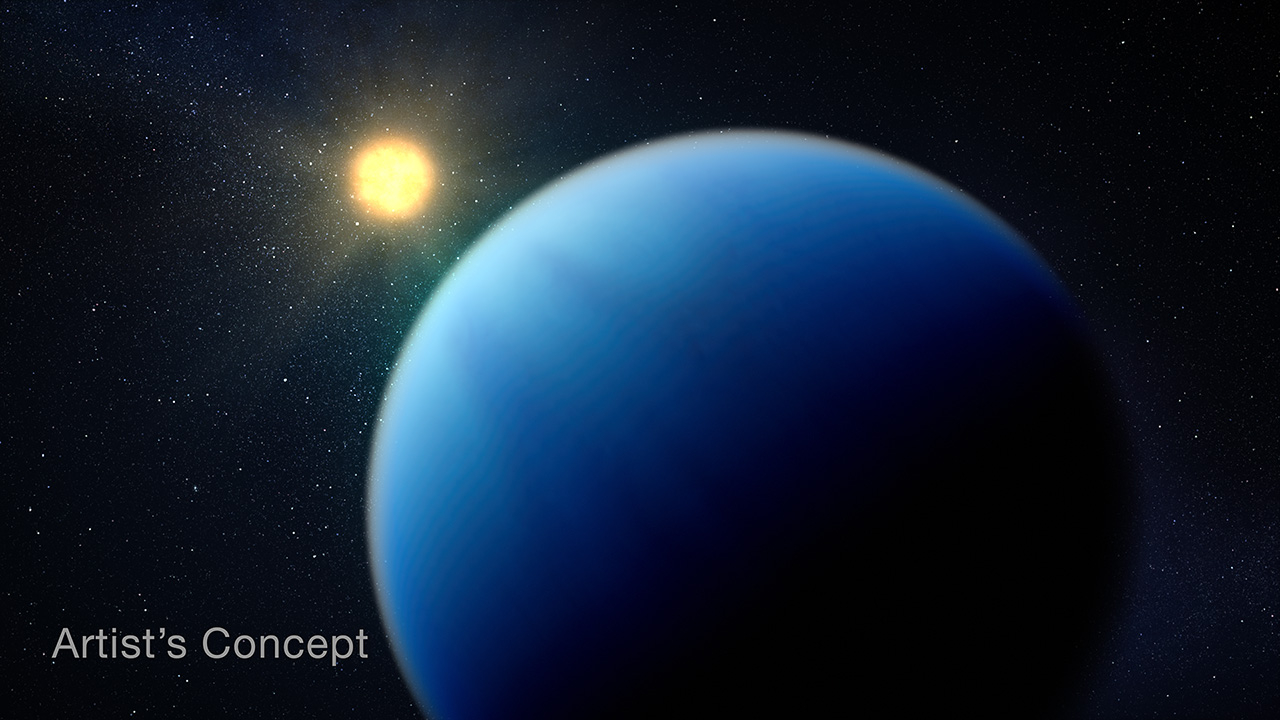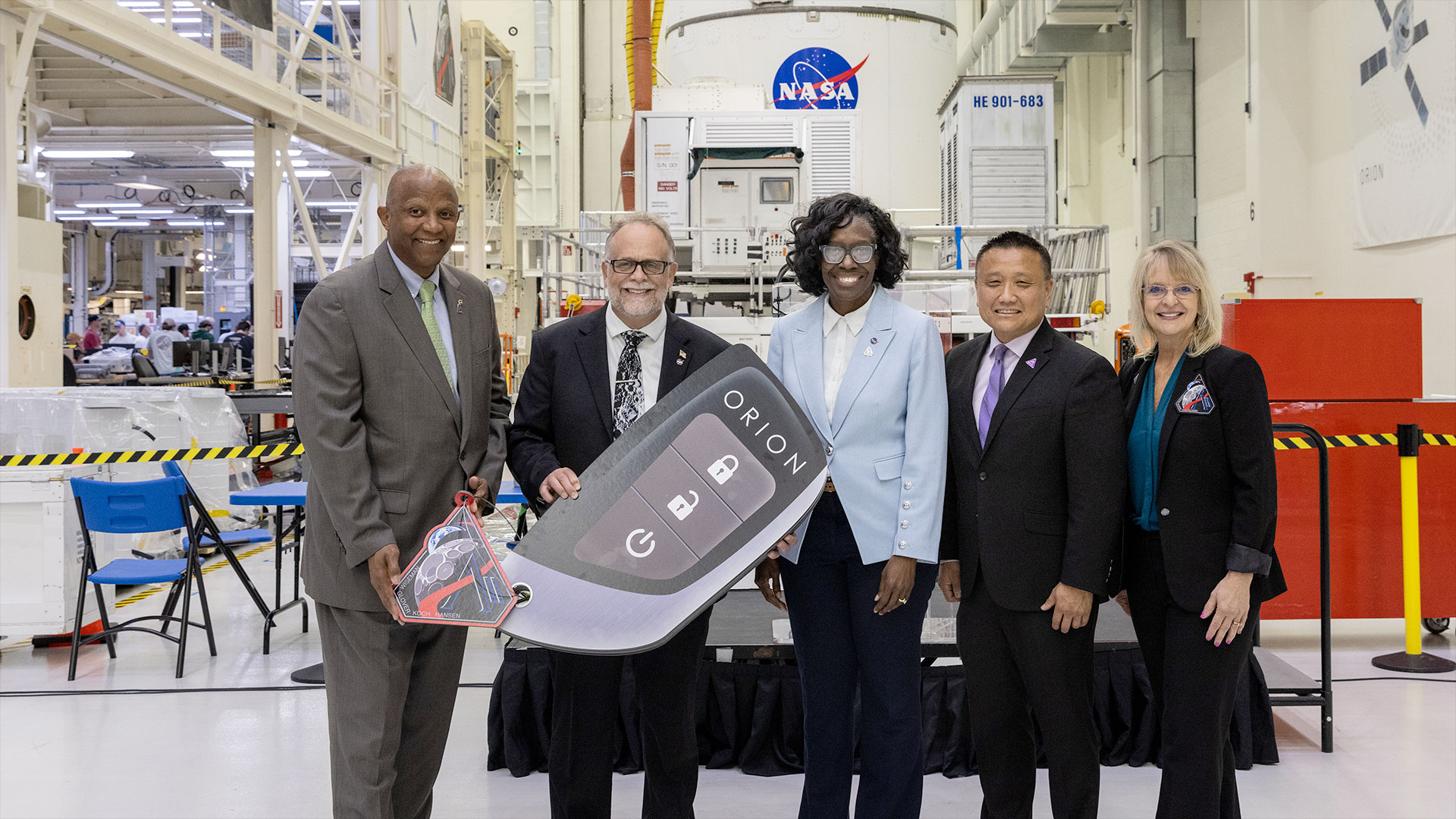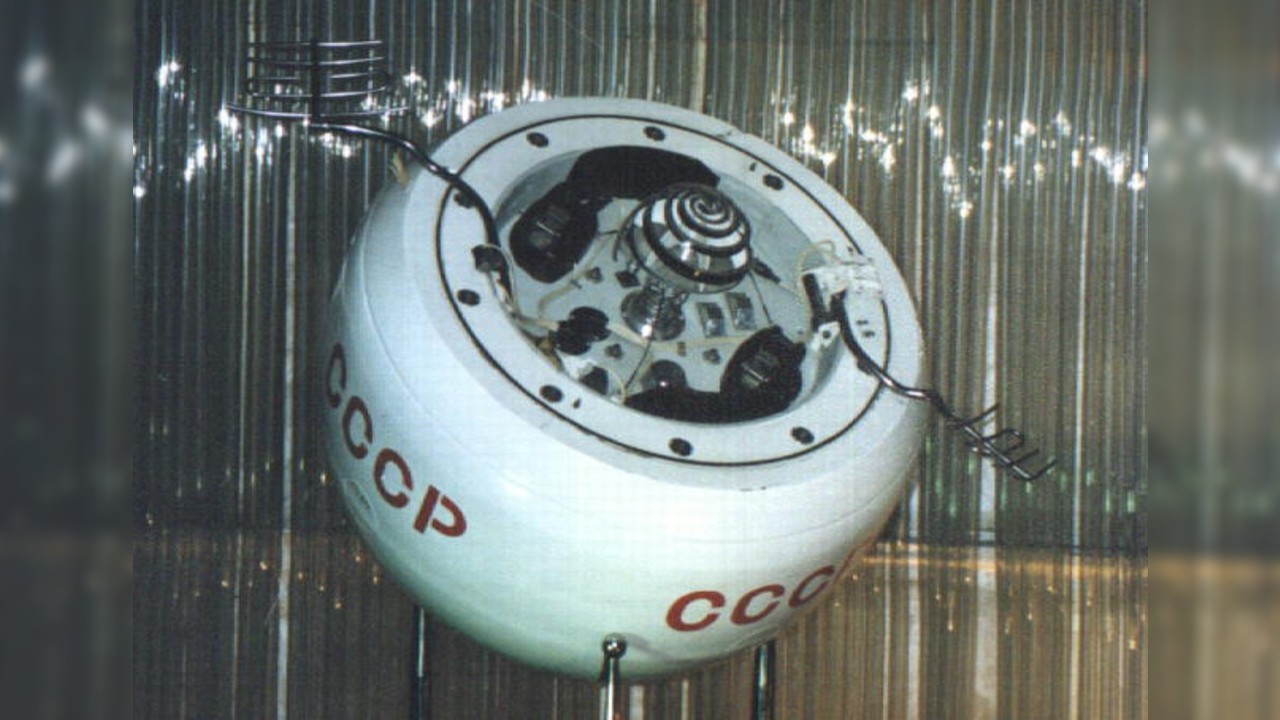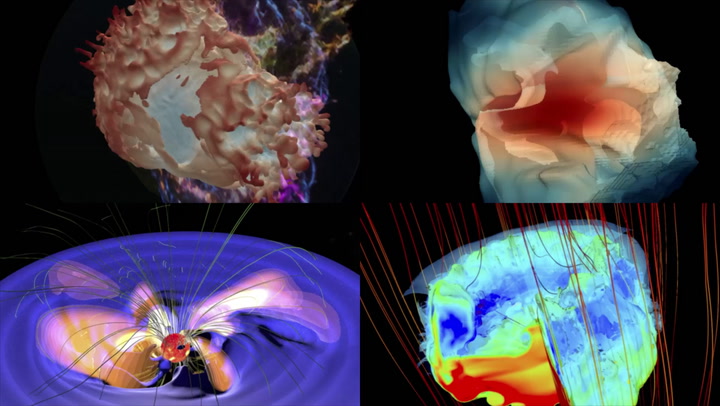
Is space-time smooth or chunky?
A new study tried to find out.
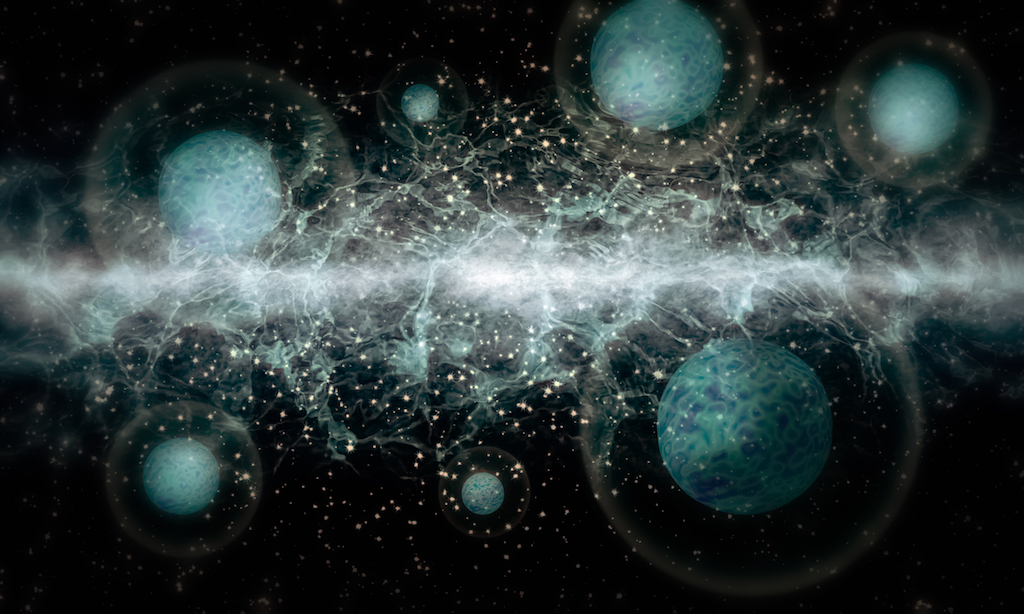
Paul M. Sutter is an astrophysicist at SUNY Stony Brook and the Flatiron Institute, host of Ask a Spaceman and Space Radio, and author of "Your Place in the Universe." Sutter contributed this article to Space.com's Expert Voices: Op-Ed & Insights.
What is the fundamental nature of reality? Is space-time — the four-dimensional fabric of our universe — ultimately smooth at the tiniest of scales, or something else?
It seems impossible to measure, but with the power of advanced telescopes peering through billions of light-years of distance, researchers are beginning to look down. Deep down.
Related: The history & structure of the universe (infographic)
The ultimate fabric
Einstein's theory of general relativity is the only way that we understand gravity, and through that prickly tangle of mathematics we have come to know something called "space-time," a four-dimensional structure (three dimensions of space and one of time) woven together into a unified fabric.
In the language of relativity, matter and energy bend and warp the fabric of space-time, and in response the bending and warping of space-time tells matter and energy how to move, something we collectively experience as "gravity."
In order for the math of general relativity to work, this fabric of space-time has to be absolutely smooth at the tiniest of scales. No matter how far you zoom in, space-time will always be as wrinkle-free as a recently ironed shirt. No holes, no tears, no tangles. Just pure, clean smoothness. Without this smoothness, the mathematics of gravity simply break down.
Get the Space.com Newsletter
Breaking space news, the latest updates on rocket launches, skywatching events and more!
But general relativity isn't the only thing telling us about space-time. We also have quantum mechanics (and its successor, quantum field theory). In the quantum world, everything microscopic is ruled by random chance and probabilities. Particles can appear and disappear at a moment's notice (and usually even less time than that). Fields can wiggle and vibrate with a will all their own. And nothing can ever be known for certain.
And so, as the physicist John Wheeler pointed out in 1960, if we were to zoom down to the tiniest possible scale (something called the Planck scale, which is about a billionth of a billionth of a billionth of a billionth of a meter), space-time shouldn't appear smooth at all. Instead, it should be a roiling, boiling mess — an angry frothing soup of particles, constantly tearing holes in space-time and patching them up again before anyone in the macroscopic world notices.
Related: The universe: Big Bang to now in 10 easy steps
Old town road
But both of these views of space-time can be correct at the same time. Either general relativity is correct and space-time is smooth, or quantum mechanics is correct and space-time is chunky. Physicists think that the ultimate answer lies in a combination of the two views, something called quantum gravity. And no, we do not currently know what that ultimate answer looks like. So if we could crack open space-time and have a look at the tiniest of scales, maybe we could get some clue as to what's really going on.
If space-time really is frothy and bubbling, then this should affect anything passing through space-time. For example, a beam of light going along its merry way will encounter all sorts of microscopic bumps and jostles — a Planckian gravel path rather than a smooth highway.
Sometimes those little jostles will give the light a boost, nudging up its energy level, and sometimes the light will encounter a little speed bump, slowing it down. The net effect is that light traveling through a frothy space-time will slowly spread out in energy.
This effect is incredibly, incredibly minute, so tiny we couldn't possibly hope to measure it in a laboratory. But thankfully, nature can provide a laboratory for us. If we can find a nice, coherent beam of light in space (in other words, a natural space laser), and that beam of light travels over billions of years to our telescopes, we can measure the spread in energy and use that to measure the frothiness of space-time.
Froth for the espresso
That's exactly what a team of astronomers did, submitting their results for publication in the Monthly Notices of the Royal Astronomical Society, and also posting their work to the online preprint site arXiv. And in a perfect coincidence, they searched for the frothiness of space-time using … espresso. No, not the drink. ESPRESSO, the Echelle Spectrograph for Rocky Exoplanet and Stable Spectroscopic Observations, an instrument based at the European Southern Observatory's Very Large Telescope.
As its name suggests, ESPRESSO was not designed to search for space-time frothiness, but it turned out to be the best tool for the job. And the astronomers pointed it at a perfect source: a run-of-the-mill gas cloud sitting over 18 billion light-years away. What makes this particular gas cloud especially useful is two facts. One, there is a bright source sitting just behind it, illuminating it. And two, there's iron in the cloud, which absorbs the background light at a very specific wavelength.
So from our vantage point on Earth, if space-time is perfectly smooth, that gap in the background light caused by the gas cloud should be just as narrow as if the cloud was sitting right next to us. But if space-time is frothy, then the light traveling over the billions of light-years will spread out, changing the width of the gap.
The astronomers didn't find any hint of frothiness, which doesn't mean that it doesn't exist — it just means that if space-time is frothy, we need more than 18 billion light-years to see it with our current technology. But the results were able to rule out some models of quantum gravity, sending them into the proverbial dustbin of physics history.
And if a future experiment does find a sign of frothiness? It would be our first window into the world of quantum gravity, something physicists have been searching for since the 1950s. And it may be all revealed by some random gas cloud.
Read more: "A limit on Planck-scale froth with ESPRESSO"
- Images: Peering back to the Big Bang & early universe
- What is the shape of the universe?
- The quantum world may have a favorite flavor, tantalizing results suggest
You can listen to the Ask A Spaceman podcast on iTunes, and on the Web at http://www.askaspaceman.com. Ask your own question on Twitter using #AskASpaceman, or by following Paul @PaulMattSutter and facebook.com/PaulMattSutter. Follow us on Twitter @Spacedotcom or Facebook.
OFFER: Save 45% on 'All About Space' 'How it Works' and 'All About History'!
For a limited time, you can take out a digital subscription to any of our best-selling science magazines for just $2.38 per month, or 45% off the standard price for the first three months.
Join our Space Forums to keep talking space on the latest missions, night sky and more! And if you have a news tip, correction or comment, let us know at: community@space.com.

Paul M. Sutter is an astrophysicist at SUNY Stony Brook and the Flatiron Institute in New York City. Paul received his PhD in Physics from the University of Illinois at Urbana-Champaign in 2011, and spent three years at the Paris Institute of Astrophysics, followed by a research fellowship in Trieste, Italy, His research focuses on many diverse topics, from the emptiest regions of the universe to the earliest moments of the Big Bang to the hunt for the first stars. As an "Agent to the Stars," Paul has passionately engaged the public in science outreach for several years. He is the host of the popular "Ask a Spaceman!" podcast, author of "Your Place in the Universe" and "How to Die in Space" and he frequently appears on TV — including on The Weather Channel, for which he serves as Official Space Specialist.
-
Geomartian This is just a story.Reply
Think small, real small. The spatial volume of a proton. A proton is rock stable sitting there in space all by itself. Take a slightly larger neutron and it is not so stable, half life of a few minutes. The proton appears to be self-contained, in its own little world. What if that were exactly true? What if the proton existed in a one-unit volume of space-time?
I am going to call this one unit volume of space a QUT (quantum unit volume of time).
All particles with mass must generate a gravitational field (equivalent to displaced time). The quantum gravitational field is complicated to describe since it affects only the QUT that it is in direct contact with.
If the temporal gradient around a particle represents gravity then both gravity and time are very lumpy at the level of atomic nuclei. The temporal gradient around a particle might be a pattern rather than a gradient. One of the nuclear forces might actually be gravity at this level.
At some distance from a single particle or nucleus the r-squared law for gravitation will appear even if it is just an average of QUT at this radius/distance. It appears that energy has a distinct structure so that the idea of smooth atoms and particles hides more than it illuminates.
The QUT might be the reason that certain energy steps are allowed while other ones are not allowed under very specific conditions. Quties do not allow contradictions.
One of the problems for motion is the lumpiness of time or pixelated speed of gravity at this level. As a particle moves it’s inertial field might be limited to certain energies since the space around it only allows specific patterns to exist without causing some contradiction.
A single orbiting particle might encounter its own wake.
Some motions might have precedence over others like atomic shells. Atomic shells have electron pairs.
So we have the space around a nucleus where the flow of time (and speed of gravity) is irregular and probably has a pattern (not a gradient) representing the energy present. Since electrons have a specific inertial field pattern the space around the nucleus may not allow it to head straight for the proton. The electron literally cannot go there. -
Robby This article needed some better editing: First, the word NOT, was left out of this sentence: "But both of these views of space-time can be correct at the same time." Second, if someone is looking back 18 BILLION light years, we just found our next nobel prize winner. Ummm...NO, no one is looking back over 4 billion years before the big bang. And this isn't just a trite error, if the distance is 1.8 billion light years, then maybe looking back deeper would allow us to see the proposed frothiness. But if they are looking back 8 billion, probably are going to have to come up with another way to test this hypothesis. But in any event, NO ONE has looked back 18 billion light years.Reply -
rod Robby, I had to read this carefully. You are correct about the article comment and 18 billion LY. The abstract cited in the report says this, "In this paper, we use science verification observations obtained with ESPRESSO at the Very Large Telescope to place a novel bound on the growth of spacetime fluctuations. To achieve this, we directly measure the width of a narrow Fe II absorption line produced by a quiescent gas cloud at redshift z=2.34, corresponding to a comoving distance of ~5.8 Gpc. ", redshift z=2.34 can be calculated here, https://ned.ipac.caltech.edu/help/cosmology_calc.html Using the first one, default settings, and flat, light time is some 10.886 billion LY, comoving distance is 18.723 billion LY (thus about 5.8 Gpc), that is where the object could be today vs. the look back light time distance for z=2.34 from Earth.Reply
I get confused too on some of these reports so go back to the cosmology calculators to check and see what may be going on with different distances reported---Rod -
rod FYI, the big lesson I learned here, some observations looking for quantum gravity did not confirm quantum gravity. This has been kicked around for a long time in efforts to reconcile QM with GR.--RodReply -
Robby Interesting Rod. I thought that was possibly the basis for the 18 billion. IMHO using the current position is bogus. How the galaxy is today is irrelevant to what they are trying to prove. What matters is how it was when the light left that galaxy. For one thing since the galaxy is impacting the light as it was less than 1 billion years post big bang, we are not going to be able to test using very much older galaxies. I assume, but do not know, that means seeing frothing space/time may be beyond our current limits.Reply -
Robert Lucien Howe ReplyGeomartian said:...
What if the proton existed in a one-unit volume of space-time?
...
I don't think it does. There is a simple answer - not just at the scale of neutrons and protons but starting at the quantum limit. Above the quantum limit space time decoheres into two regions, the real which is space, and the non-real which is time. Below the quantum limit the metric of space (space-time) is different and allows totally curved geometries at much lower energy. (either through the geometry of a physical four-space or a reduced speed of light.) This quantum geometry allows all massed particles to be described directly as points of totally curved space time.
This idea has been partly described before under the name Newtonian Singularities, I came across the basic idea in Roger Penrose's book The Emperors New Mind..
The key to understanding why this is not already far better known is that it defines nuclear particles as point infinities.. and current mathematics does not allow infinities.
Or more precisely current mathematics does not work with infinities so it is commonly assumed that they do not exist. The more simple answer of course is that the current maths is wrong.
There is no direct proof of my idea at the present but it does allow the unification of relativity and quantum mechanics and offers basic tentative solutions to dark matter and to the Anthropic Question problem. If it was proved to would disprove the Relativity of Simultaneity and the idea of a General Time Dimension. -
Trick Question ReplyGeomartian said:Since electrons have a specific inertial field pattern the space around the nucleus may not allow it to head straight for the proton. The electron literally cannot go there.
Ignoring all the nonsense math, I'll just point out that electrons can and do appear within the proton radius. This is measurable and well-established. -
Trick Question ReplyRobert Lucien Howe said:Above the quantum limit space time decoheres into two regions, the real which is space, and the non-real which is time. Below the quantum limit the metric of space (space-time) is different and allows totally curved geometries at much lower energy. (either through the geometry of a physical four-space or a reduced speed of light.) This quantum geometry allows all massed particles to be described directly as points of totally curved space time.
Spacetime does not "decohere" into space and time at any limit, either in GR or quantum physics, and particles are not accurately described as "points" in any sense of the word, much less "points of totally curved spacetime", whatever that means.
It's always frustrating to read comment sections on news articles for quantum physics. People who have no idea how any of this works think they can just invent terminology and math and be right. It's Dunning-Kruger in full effect. -
Geomartian Ignoring all the nonsense math, I'll just point out that electrons can and do appear within the proton radius. This is measurable and well-established. Trick QuestionReply
Can I change my answer to chunky with peanuts? -
William Pennat In my understanding, at the very smallest scale, spacetime is composed of 4-D "Planck bits". These are the Planck length cubed (to get the Planck volume) which is 4.22 x 10^-105 cubic meters (pretty small!) times the Planck time, which is the time it takes a photon travelling at the speed of light to cross a distance equal to the Planck length. (10^-43 seconds). Planck bits should really be the basis of a so-called "Theory of Everything" as they represent a quantization of spacetime at the very smallest possible scale, possibly providing the basis for unifying relativity and quantum mechanics. Think of Planck bits as the "pixels of reality"....Reply



